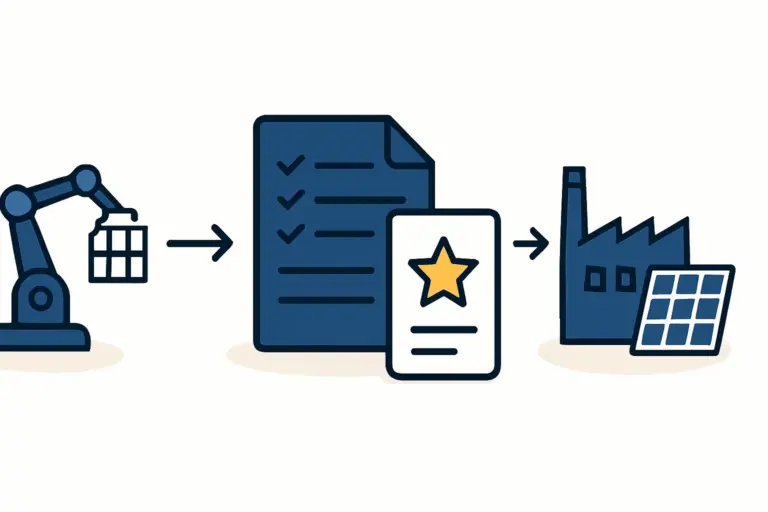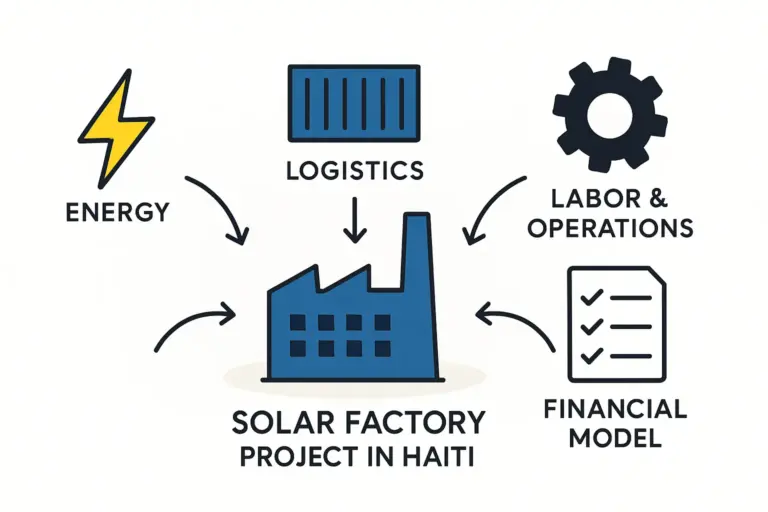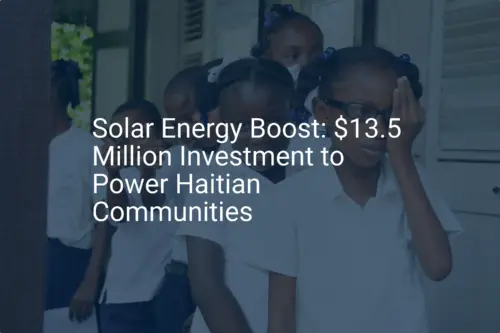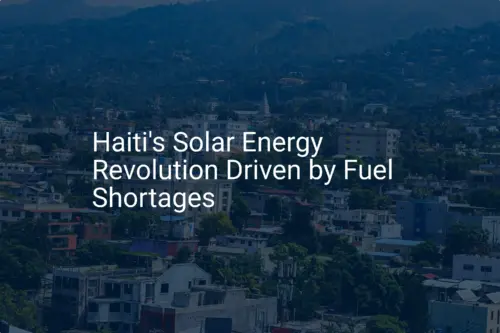To an entrepreneur, Haiti’s unemployment rate of nearly 15% might seem like a compelling statistic. At first glance, it suggests an abundant supply of labor for a new solar module factory. However, establishing a high-tech manufacturing facility there requires a much deeper analysis. The core challenge is not finding people, but finding people with the right combination of technical skills, formal work experience, and managerial aptitude.
This article provides a framework for assessing the Haitian labor market specifically for the solar industry. It examines the availability of skilled personnel, identifies common gaps, and outlines the strategic importance of a well-structured training program. Understanding these nuances is critical for any investor considering starting a solar panel factory in the region.
The Haitian Labor Landscape: Beyond the Numbers
Building a successful team requires looking beyond headline statistics to understand the underlying structure of the local economy. In Haiti, several factors shape a unique human resources environment.
The Dominance of the Informal Economy
Nearly 87% of Haiti’s economy is informal, a reality with direct implications for any investor.
-
Limited Verifiable Experience: A large portion of the potential workforce may possess practical skills but lack formal employment records, certifications, or professional references. Recruitment processes must be adapted to assess hands-on capabilities rather than relying solely on CVs.
-
Transition to Formal Structures: Employees transitioning from the informal sector may need orientation on concepts common in formal business environments, such as fixed schedules, hierarchical reporting, and standardized quality control.
Education and Vocational Training Gaps
While Haiti has a primary literacy rate of over 60%, access to higher-level technical education remains limited.
-
Tertiary Education: Only about 1.2% of the population is enrolled in tertiary education. The result is a significant scarcity of locally trained engineers, senior technicians, and business administrators with formal degrees.
-
Vocational Focus: Existing vocational training programs often focus on traditional trades like construction, automotive repair, and textiles. There is a clear gap in training for advanced manufacturing, electronics, and automation—skills central to the solar panel manufacturing process.
This educational landscape means a factory cannot expect to hire a full team of “plug-and-play” technicians. A substantial investment in foundational and specialized training will be essential.
Assessing Skill Availability for a Solar Factory
A typical 20-50 MW solar module assembly plant requires a workforce of 30 to 50 people. In the Haitian context, these roles fall into three main categories, each with its own challenges and opportunities.
1. Production Line Operators
These roles involve operating machinery such as stringers, laminators, and testers.
-
Availability: The general labor pool is large. Candidates with good manual dexterity, attention to detail, and a willingness to learn are readily available.
-
Training Needs: This group requires the most intensive hands-on training. Since the machinery is highly specific, no candidate will have prior experience. The training program must cover machine operation, quality checks, safety protocols, and basic maintenance. A turnkey solar manufacturing line often comes with standardized training modules from the equipment supplier, which can serve as the foundation for the program.
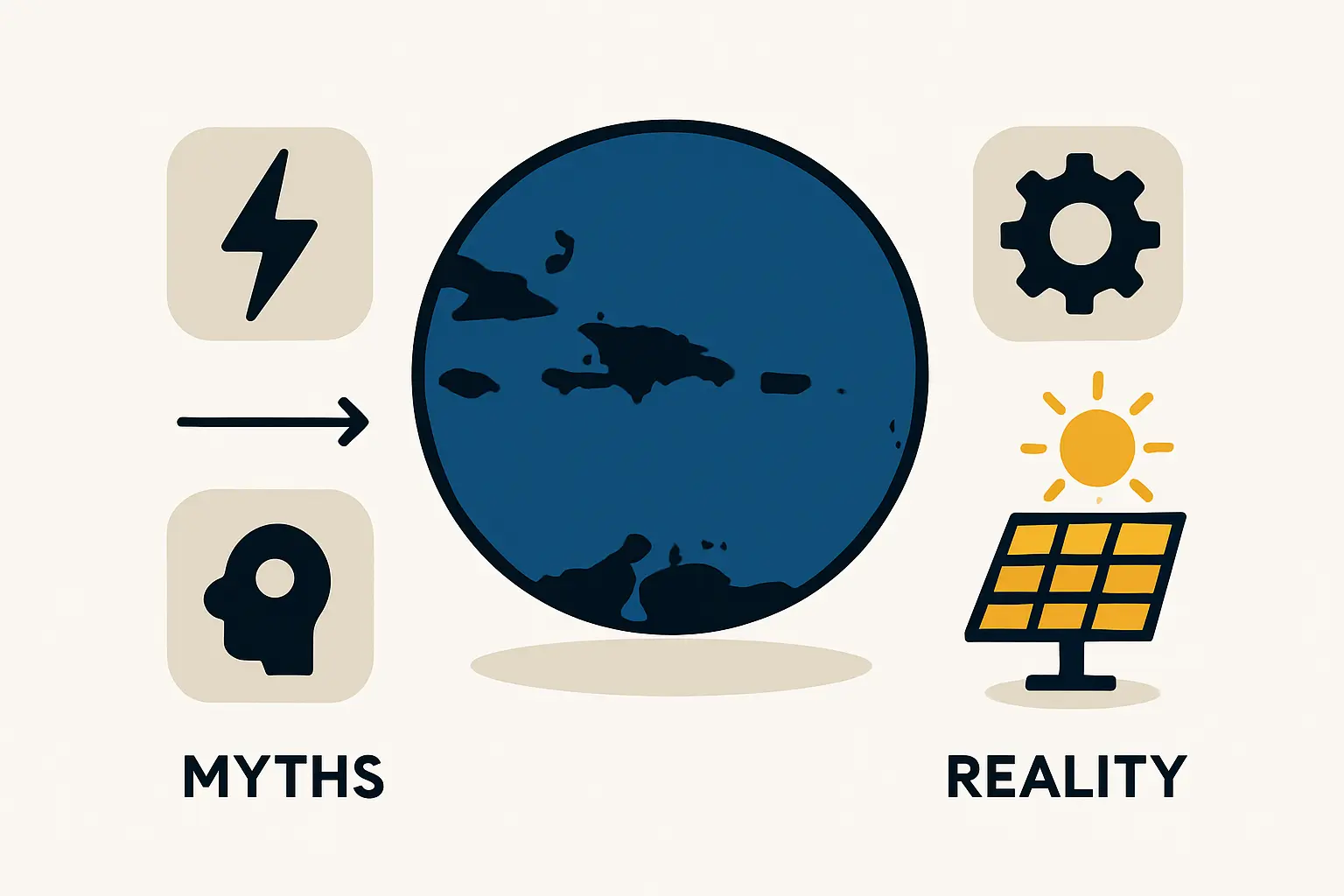
2. Technicians and Engineers
This group is responsible for maintenance, process optimization, quality control, and troubleshooting.
-
Availability: This is the most challenging category to fill locally. The low rate of tertiary education means the pool of qualified electrical, mechanical, or industrial engineers is very small.
-
Recruitment Strategies:
- Haitian Diaspora: Actively recruiting from the Haitian diaspora in North America and Europe can be a highly effective strategy. These individuals combine technical qualifications with cultural and linguistic familiarity.
- Upskilling Local Talent: Identify promising individuals from vocational schools or related industries (e.g., electronics repair) and invest in advanced training, potentially including overseas programs with equipment manufacturers.
- Expatriate Staff: In the initial phase, employing one or two expatriate lead engineers is often essential to manage operations and spearhead the training of the local technical team.
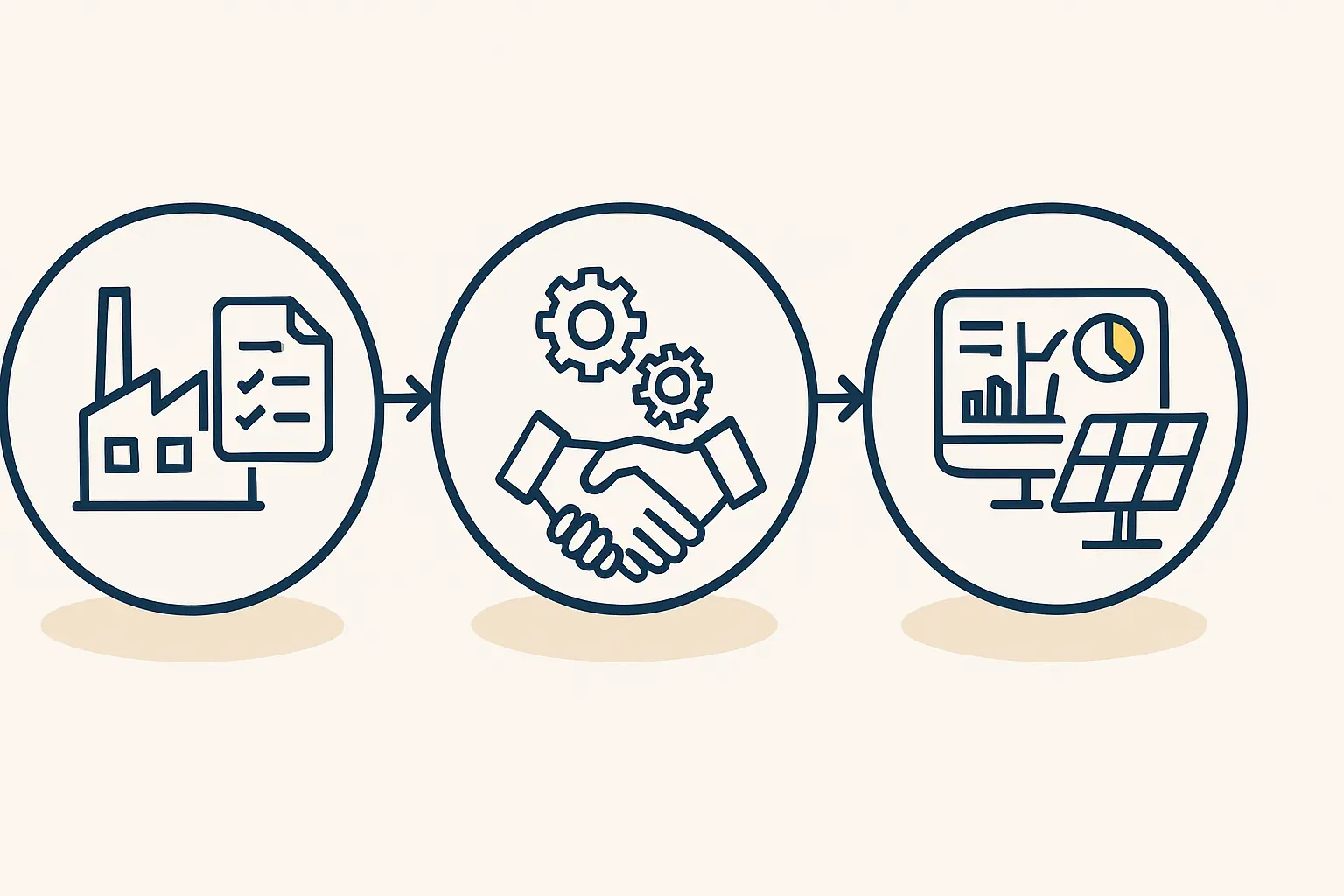
3. Management and Administration
This includes roles like plant manager, finance officer, logistics coordinator, and human resources.
-
Availability: A pool of managerial talent exists, often with experience from the large number of NGOs and international organizations operating in Haiti. These professionals typically have strong skills in project management, finance, and logistics.
-
Adaptation Needs: While highly capable, their experience may need to be adapted to the specific demands of a for-profit manufacturing environment, with its focus on efficiency, cost control, and production targets. The overall investment for solar panel manufacturing must account for competitive salaries to attract this caliber of talent.
Building a Training Framework: From Recruitment to Operation
A proactive human capital strategy is not an afterthought; it is a cornerstone of the business plan. A successful framework includes three phases:
-
Phase 1: Aptitude-Based Recruitment: Screening should focus on aptitude rather than experience. Use practical tests to assess manual dexterity, problem-solving skills, and the ability to follow complex instructions. For managerial roles, use case studies relevant to manufacturing challenges.
-
Phase 2: Foundational and Specialized Training: Implement a multi-stage training program. This includes classroom instruction on photovoltaics and safety, hands-on workshops to build practical skills, and supervised on-the-job training on the actual production equipment.
-
Phase 3: Continuous Development and Retention: Initial training is only the beginning. Cross-train operators on multiple machines to create a flexible workforce. Identify high-potential individuals for leadership development paths. It is also critical to address external realities like security, as providing secure transport can be a crucial factor in retaining a well-trained team.
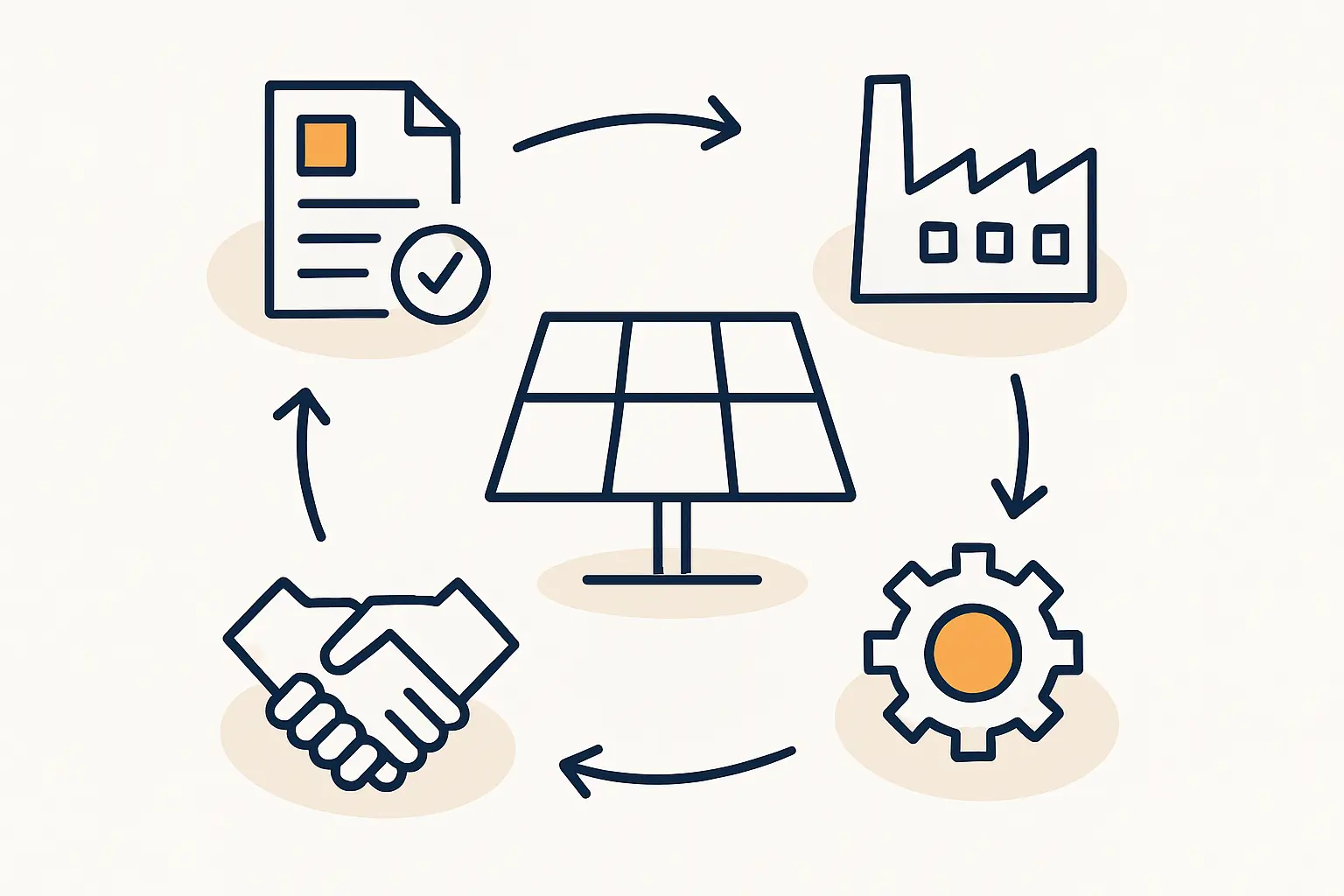
Frequently Asked Questions (FAQ)
What are the most difficult positions to fill for a solar factory in Haiti?
Given the labor market structure, the most challenging roles are typically Head of Engineering, Maintenance Supervisor, and Quality Control Manager. These positions require a specific blend of technical education and hands-on industrial experience that is scarce locally.
Is knowledge of French or Haitian Creole necessary for management?
Yes, fluency is critical. While English may be used for technical communication with international partners, daily plant operations, training, and management must be conducted in Haitian Creole. Senior managers must be fluent to be effective.
How does the security situation in Haiti affect workforce planning?
Security is a significant operational consideration. It can affect employee travel, the willingness of expatriate staff to relocate, and the safety of the facility. The business plan must include a budget and strategy for robust security measures and potentially employee transportation.
Can we rely solely on training provided by machine suppliers?
While an excellent foundation, supplier training is rarely sufficient. A comprehensive internal training program is needed to cover company-specific processes, local safety regulations, quality culture, and ongoing skill development.
Conclusion: Human Capital as a Strategic Investment
Establishing a solar panel factory in Haiti offers a unique opportunity to build a skilled workforce and contribute to the country’s industrial development. Success, however, depends on a clear-eyed assessment of the labor market.
Investors must look beyond the simple unemployment metric and plan for a significant, strategic investment in recruitment, training, and retention. By viewing human capital not as a cost but as the central pillar of the operation, an entrepreneur can build a capable, motivated, and resilient team poised for long-term success. This detailed planning is a core component of the feasibility studies and turnkey project support available from experienced firms in the solar manufacturing sector.


